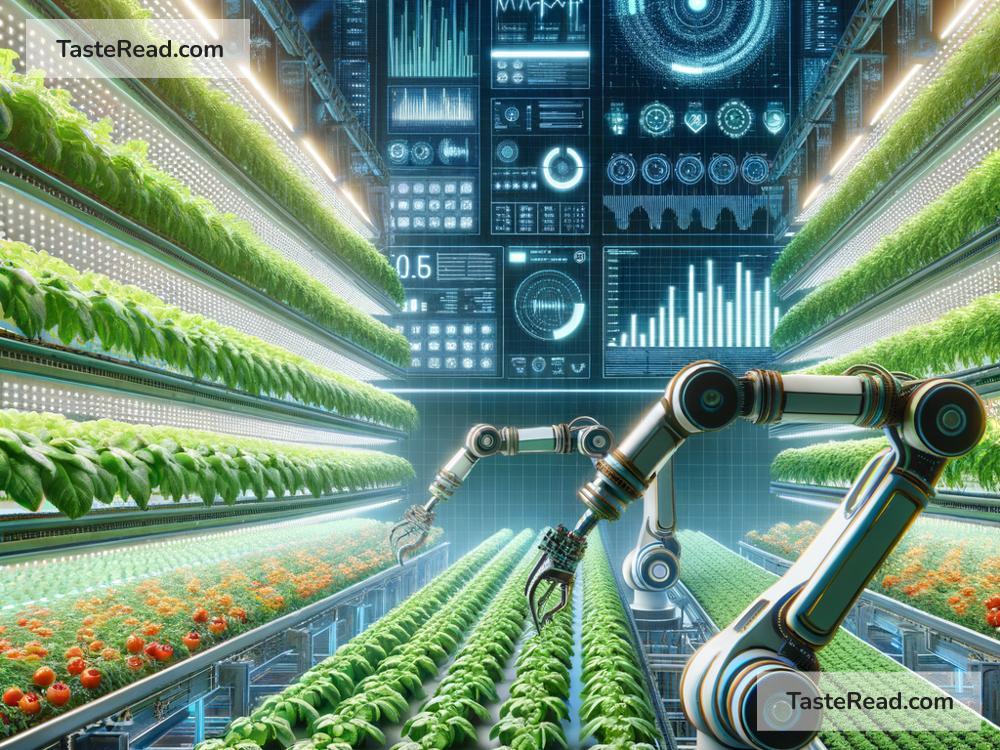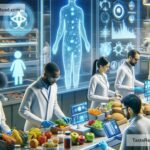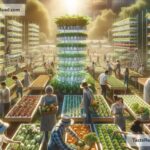The Future of Food Security Technologies
In the coming years, food security will become one of the most important challenges the world faces. With a growing global population, climate change, and limited natural resources, finding ways to make sure everyone has enough nutritious food will require new, innovative ideas and technologies. The future of food security lies in creative methods, cutting-edge solutions, and global cooperation to ensure no one goes hungry.
Why Food Security Matters
Food security means having access to enough safe and nutritious food to live a healthy and active life. Unfortunately, millions of people around the world face hunger and malnutrition every day. According to the United Nations, the world population is expected to reach over 9 billion by 2050. Feeding everyone will not be easy, especially with challenges such as unpredictable weather, degrading soil, and water shortages.
To tackle these issues, scientists, farmers, and innovators are developing new technologies. These technologies aim to grow more food, use resources efficiently, reduce waste, and ensure everyone has access to nutritious meals.
Smart Farming and Precision Agriculture
One of the key technologies shaping the future of food security is smart farming, also known as precision agriculture. This approach uses data, sensors, and advanced tools to help farmers grow crops more efficiently. Instead of applying water, fertilizer, or pesticides to an entire field, precision agriculture allows farmers to focus on the specific areas that need attention.
Drones and satellites can monitor crops from the sky, providing updates on their health, soil moisture, and growth. On the ground, sensors can measure the nutrient levels in the soil or detect pests early. Farmers can use this data to make better decisions and produce higher yields without wasting resources. Additionally, robotic tractors and automated harvesters are reducing labor costs, making agriculture more productive and sustainable.
Vertical Farming: Growing Crops Indoors
Another exciting development is vertical farming. This method grows crops in tall buildings instead of traditional farmlands. Using stacked layers under controlled conditions, vertical farming allows fruits, vegetables, and herbs to be grown year-round without worrying about the weather.
LED lights replace sunlight, and hydroponics or aeroponics systems deliver water and nutrients directly to the plants with almost no waste. Vertical farming requires much less space, water, and chemicals compared to regular farming. Plus, it can be set up in cities, reducing the distance food travels to reach consumers. As urban populations rise, vertical farming may play a key role in providing fresh, local produce.
Lab-Grown Meat and Alternative Proteins
Meat production is a major contributor to greenhouse gas emissions and uses up significant land and water. To reduce the environmental impact of food production while still offering protein to billions of people, scientists are creating lab-grown meat and plant-based alternatives.
Lab-grown meat, also called cultured meat, is produced by growing animal cells in labs without raising or slaughtering animals. It tastes and looks similar to conventional meat but has a smaller environmental footprint. Meanwhile, plant-based meats made from ingredients like soy, peas, and mushrooms are becoming increasingly popular. Startups are even exploring protein sources like insects and algae, which are nutrient-rich and sustainable.
These protein innovations not only address environmental concerns but also help meet the growing demand for food in a world facing limited resources.
Blockchain for Food Transparency
Blockchain technology, which is commonly known for its use in cryptocurrencies, is making its way into agriculture and food security. Blockchain can be used to create digital records of food production and distribution. With this technology, farmers, suppliers, retailers, and consumers can track where food comes from, how it was produced, and whether it meets safety standards.
This transparency ensures that food is safe, prevents fraud, and reduces waste during transportation. For example, if there’s an outbreak of a foodborne illness, blockchain can quickly identify the source and stop the spread. By making the food supply chain more trustworthy and efficient, blockchain can build stronger systems for food security.
Combating Food Waste with Technology
A startling amount of food is wasted every year—almost one-third of all food produced globally. This waste happens across the supply chain, from farms to grocery stores to households. New technologies are stepping in to prevent food waste and redistribute surplus food to those in need.
Apps are being developed to connect grocery stores, restaurants, and individuals with charities that can collect unused food for donation. Smart sensors in refrigerators can alert you when your food is about to expire. AI-powered tools can predict demand better, so companies produce only what is needed. By cutting down food waste, we can make better use of resources and help feed more people.
Genetics and Climate-Resistant Crops
Climate change is causing challenges such as droughts, floods, and rising temperatures that make farming harder. To adapt to these changes, scientists are using genetics to create crops that can survive in extreme conditions. For example, researchers are developing drought-resistant wheat, salt-tolerant rice, and disease-resistant bananas.
These genetically modified (GM) crops are designed to be more resilient and produce higher yields. While GM crops can be controversial in some regions, they hold promise for protecting food supplies in areas most affected by climate change.
What’s Next?
The future of food security technologies is filled with opportunities. From smart farming tools to lab-grown meat, these innovations will help us produce more food while caring for the planet. However, technology alone won’t solve all problems. Governments, communities, and businesses must work together to ensure that these solutions are accessible to everyone.
As new technologies continue to develop, the goal remains the same: to provide safe, nutritious, and sustainable food for all. With creativity, collaboration, and science on our side, the future looks bright for tackling global food security challenges.


